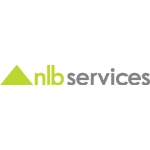© 2025 Next Level Business Services Inc. All Rights Reserved.
Quiet Quitting’ Explained: Here’s What Recruiters Need to Know About This Buzzword
By NLB Services
Introduction – Quiet Quitting
Lately, in the corporate world, there is a term that has become widely popularized – ‘Quiet Quitting’. Some consider it a new phenomenon post-pandemic, whereas, others say it is not something new.
‘Quiet quitting’ has become a buzzword among employees who are at the job just for the paycheck and aren’t emotionally engaged with the role. They only do the bare minimum things at work and do not bother to go “above and beyond”. However, some are not so convinced that the ‘quiet quitting’ trend even exists.
During the pandemic, people have been yearning for more meaning in their lives and love to spend time with their family, the dawn of work.
What is Quiet Quitting?
‘Quiet Quitting’ is new terminology to many of us. It is a pushback against the overbearing pressure at work. Widely associated with employee burnout, ‘Quiet Quitting’, as the name suggests is a state of discernment and conscious disengagement at work.
It is the state where employees perform their bare minimum tasks required on the job front by setting firm boundaries.
But why is ‘quiet quitting’ in trend and bad?
Quiet quitting means employees doing the minimum requirements at the job and putting in no more effort or enthusiasm than absolutely necessary. In this situation, neither the employee quits the job nor does perform with full enthusiasm and continues to collect the pay cheque/salary from the company.
In the early 2020s, amid the beginning of the lockdown, quiet quitting emerged as a much-publicized trend in the United States and other countries. Some observers also questioned how common the trend actually is, and whether it’s even a new phenomenon. A 2022 Gallup survey suggested that at least half of the U.S. workforce consists of quiet quitters.
It also makes the skeptics question those numbers where quiet quitting is said to be a new trend or is a new name for workers’ dissatisfaction.
Prioritizing a healthy work-life balance is nothing new. Great Resignation has taught us many things; it’s that people aren’t afraid to walk away from toxic work cultures and live peaceful lives.
How to combat Quiet Quitting?
Quiet Quitting doesn’t necessarily mean that employees are slacking off. It means they are at the most dissatisfied with their role and gradually lose interest in work.
One of the main reasons for dissatisfaction can be a stressful work environment and a hustle culture mentality.
Let’s read on and find ways to curb such situations.
1. Deep Dive Into Your HR Data
A data-driven employee survey insights have proven to be an effective way to measure if the company’s work culture stands and learn employees’ minds. Deep dive into the HR data that will help to make better people decisions. The core benefits of an employee data study can help to recognize if the employee turnover rate is higher compared to the competitors. Have absences risen without any explanation? Have salaries improved over time etc.
Evaluate the underlying trends in the HR data to figure out what is triggering employee dissatisfaction and making them quiet quitters. It will then help to get a better scientific understanding of the situation and will be able to address it objectively.
2. Encourage Quiet Quitters to Be More Engaged
Ways to focus on improving engagement among quiet quitters-
Improving employee engagement among quiet quitters is an effective employee retention plan that minimizes quiet quitting. A successful employee engagement plan can help to boost employees’ productivity within the organization.
Healthy work culture is developed by focusing on improving employees engagement in several ways-
a) Building employee recognition: Giving and receiving genuine appreciation is supreme to well-being.
b) Meaningfulness: When employees are given a meaningful task, they feel part of something respectful and work dedicatedly.
c) Values: Build a culture of solid values so that your employees can handle challenges.
d) Inclusion: Create an inclusive environment where every individual is given the same opportunity and where employees can demonstrate higher advocacy and loyalty.
e) Communication: Communicate to improve engagement among employees. Employees feel respected when they understand the “why” and believe leadership truly gets what’s happening daily.
3. Ensure that your team receives fair compensation
Pay disparities drive employees to quit without making a fuss. The problem is not lack of willingness to do more work, but a perceived lack of fair compensation. Managers who promise raises that never materialize, or ignore extra work and compensation, erode employee trust and respect. It’s important to keep pay competitive, acknowledge extra effort and results, and offer non-monetary compensation such as recognition, perks, benefits, and flexibility. However, if staff are underpaid, non-monetary compensation alone will not suffice.
4. Clearly communicate role growth prospects
Employees who quietly quit often feel they are doing more work than their initial job description. Job evolution is common, especially in startups, but sudden changes can catch employees off guard. To avoid this, be transparent about role growth during the interview process and discuss the possibility of expanding duties. Providing accurate timelines can also help manage expectations.
How quiet quitting impacts organizations
The pandemic introduced many challenges that increased what is demanded from employees and what other options they can explore. Remote work has fuelled the quiet quitting movement in so many ways. First, it has increased the number of hours employees spend working on, contributing to increased levels of burnout. As per The New York Times, Americans working from home/remotely spent 3 more hours on the job each day and they poured much of the extra time not into their own lives but into their zoom meetings and slack messages. That tends to cause them to quit the job or become a quiet quitter.
Employees acting on their dissatisfaction with their job cost the global economy $7.8 trillion in lost productivity, according to Gallup’s State of the Global Workplace report.
Impending economic worries result in a slowdown where productivity levels are a serious concern for employers. ‘Quiet quitters’ may have legitimate concerns for them to be driving their actions at work, but according to most workplace experts, doing less may be tempting in the short run, but in the long term, doing less could harm one’s career and adversely impact the company’s productivity.
How employers can better respond to quiet quitting
Not every work culture is the same. Talking about ‘quiet quitting’ in an organization, the very first step is to find out what’s on the minds of your employees, and the best way to do so is to ask them personally. In a leadership role driving a company culture that suits everyone can mitigate’ quiet quitting’. A company can improve on the toxic work culture and prevent the company from chances of ‘quiet quitting’ by offering great culture and by inspiring employees to retain for longer in the following ways-
- Do not retaliate but listen to your employees’ concerns-
To do so, the employee-manager conversation is the most effective way to prevent ‘quiet quitting’ at the workplace. Listen to your employees instead of retaliating against their concerns. It will allow companies to gather valuable insights about the workplace.
- Make your company a people-first culture.
Great leaders understand the benefits of building people-first culture. Right from engagement and retention to productivity, innovation, efficiency, and much more.
- Annotate job responsibilities
Understand high work volumes and source out employees’ demands in a channelized manner. Experiment with ways to improvise efficiency, interdepartmental cooperation, and open-mindedness at the workplace to make it a culturally fit company.
Final words
The phrase ‘quiet quitting’ might sound a little cynical, as it may seem to imply that employees do not care about their career or the existing job is merely a source of money and they consider it as one of the tasks among others that need to be completed and come to their families. In reality, they have already quit their job in their mind to focus on what truly matters in their life. Whether it seems cynical or not, the truth is that the concept of ‘quiet quitting’ has caught on. It is thus important to examine what it really means in corporates and reality. There are certainly some essential positive lessons embedded within the whole concept of ‘quiet quitting’ like-
- importance of having a balanced work life,
- overworking doesn’t lead to the best performance at work, is not sustainable, and
employees’ worth doesn’t depend on their time spent at work.
And so on.
Talent Solutions








